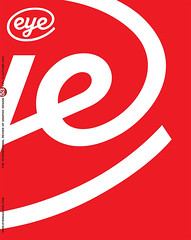Autumn 2004
The myth-maker of LA
Ed Ruscha
Richard D. Marshall. Design by Base.<br>Phaidon, £45<br>The first time I visited Los Angeles I bought a book called Twentysix Abandoned Gasoline Stations by Jeffrey Brouws. I bought it in the way that one might buy souvenir postcards of the Vatican. The gas station is to California as churches are to Italy: they have the same quality of ‘icity’ – Californicity as opposed to Italianicity.
Twentysix Abandoned Gas Stations was an homage to Ed Ruscha’s 26 Gasoline Stations (1963), a masterpiece of Californicity. Ruscha (pronounced Rooshay), has spent a lifetime working on the essence of Los Angeles, so much so that he has become part of it himself. When asked about the use of words that dominate many of his pictures, he has said: ‘They just occur to me; sometimes people say them and I write them down and then I paint them. Sometimes I use a dictionary.’ Not much help there, but you don’t really need it since everything you need is in the images and his image. Ruscha is really a myth-maker and the myth is LA. The myth began with Raymond Chandler, James Elroy, and continued in a thousand films noir up to LA Confidential via Chinatown.
Ruscha’s bit of the myth begins in 1960. LA is a world of parking lots and gas stations, through which drives his friend Dennis Hopper – the myth of Easy Rider and the Big Lebowski. Ruscha’s LA is wide roads and big words – a world almost as existential in its emptiness as Roadrunner’s Monument Valley. He depicts this with the technique of crime shows, such as Dragnet or the FBI Files – ‘Just the facts M’am’. Most of Ruscha’s early work is seemingly reportage but this cannot disguise how cool he finds it – you only have to look at the pictures of the artist in the book to see that he has a strong aesthetic. This rearranges the mundane into the cool (and for cool read mythic), and makes his work art. On 60-something Ruscha, a white shirt and bootlace tie make him look the heart of Americanness; not ironic or flag-waving, just there. Similarly his gas stations and other LA buildings seem to build our sense of LA rather than simply confirm it; he creates clichés as much as he reiterates them.
The thing about myths is that they exist without the need for explanation. They are not required to be realistic or logical; all that’s needed is that they are emblematic. Ruscha is skilled in identifying tiny elements of the myth and capturing them in a way that is both enigmatic yet dripping with symbolism. This is most clear in his transformation of American words and display graphics. In this book Ruscha is reported as saying, ‘I love the language. Words have temperatures to me. When they reach a certain point they become hot words, then they appeal to me.’ What he seems to be describing is the process by which he weighs up the significance of words and that this seems to relate strongly to a mythic America – such as the word ‘Tulsa’, or the phrase ‘Parking For House of Blues Body Shop Standard Chateau Marmont’.
His later work also shows a more sophisticated use of ideas derived from the experience of living in LA. For example, the idea of the arbitrary reference as completely normal and as the basis of many bizarre motel signs. Another is his use of elements so anonymous and bland that they could only be from LA, as in his work Wen Out For Cigrets N Never Came Back – an empty cliché rendered in a boring typeface painted over a suburban grid of streetlights at night.
Ruscha’s work is Angelino as Boogie Nights or The Swimmer, and at its best does everything that more obviously serious artists do but without the pretensions. Richard D. Marshall’s book is a comprehensive collection of his work that is as complete as any filmography and offers about the same level of insight into the artist’s work. It tells you what happened and when, and draws your attention to similar works of contemporaries and highlights precursors, but offers little exploration of the significance of his work or the relationship between his life and work. In a word it is coy: coy about Ruscha, who has interesting friends and interesting attitudes to living in LA, yet there is nothing about this (and as a Hello reader I want to know!). And coy in style to the extent that he refers to a woman’s genitals as ‘a portion of the female anatomy’ (the title of the image he is talking of is Tulsa Slut). The lacklustre text doesn’t matter though, as the good design and combination of artworks with contextual and biographical illustrations allows the reader to fill in the answers to the questions not asked by the author.
David Heathcote, design historian, Saffron Walden
First published in Eye no. 53 vol. 14, 2004
Eye is the world’s most beautiful and collectable graphic design journal, published quarterly for professional designers, students and anyone interested in critical, informed writing about graphic design and visual culture. It is available from all good design bookshops and online at the Eye shop, where you can buy subscriptions, back issues and single copies of the latest issue. You can also browse visual samples of recent issues at Eye before You Buy.

